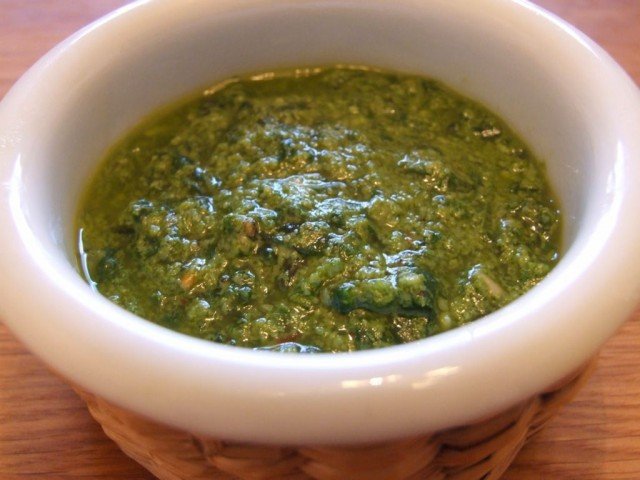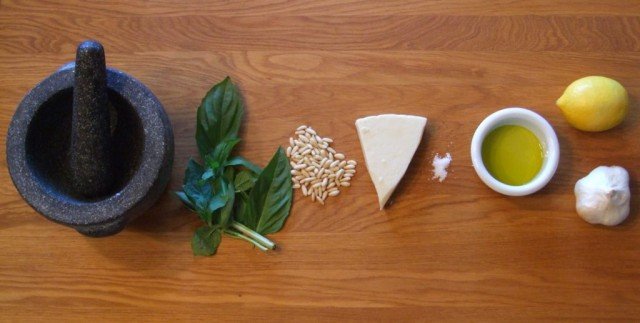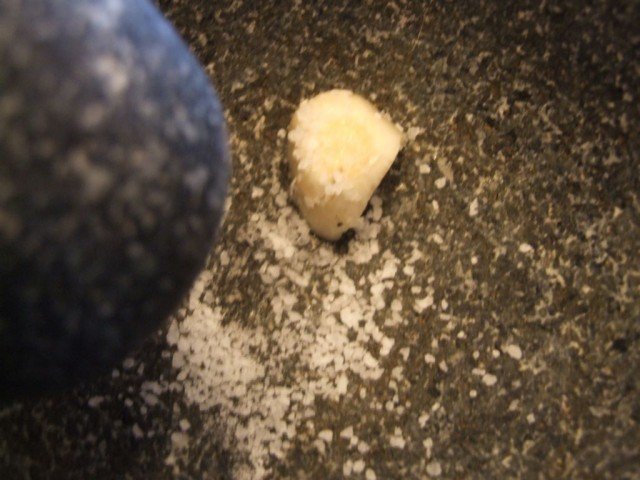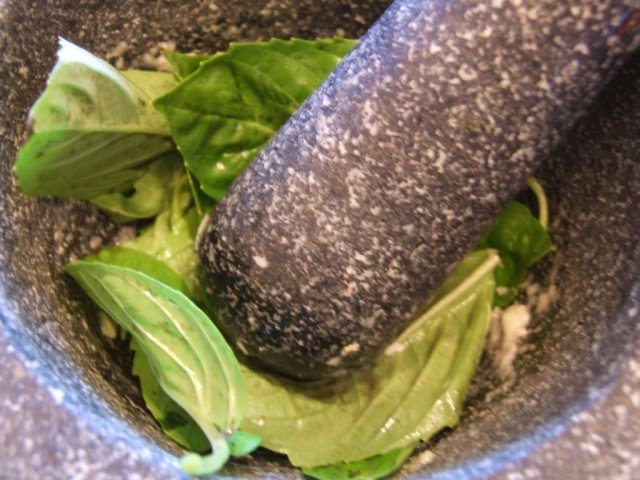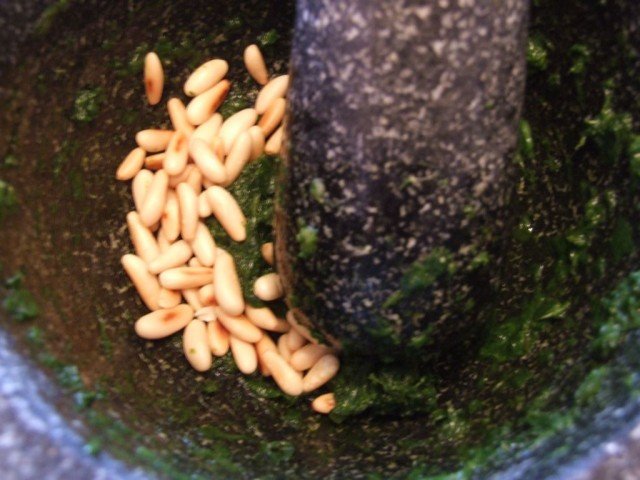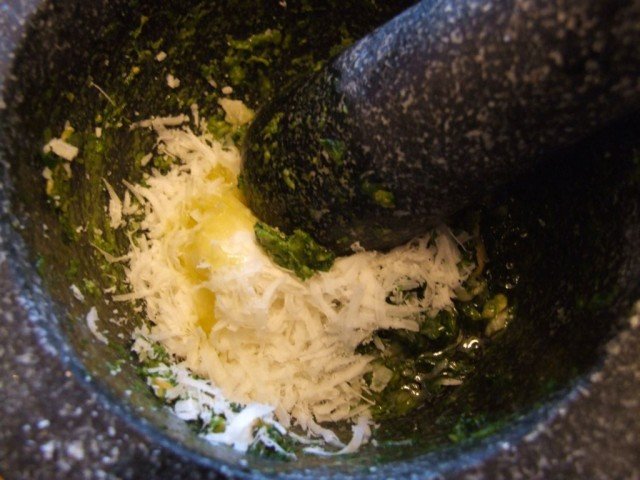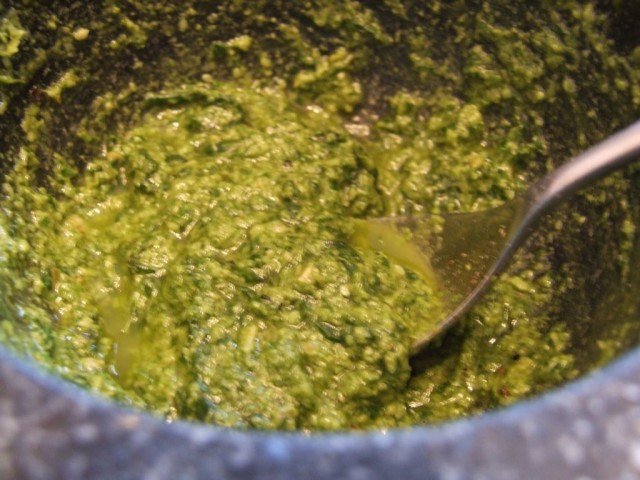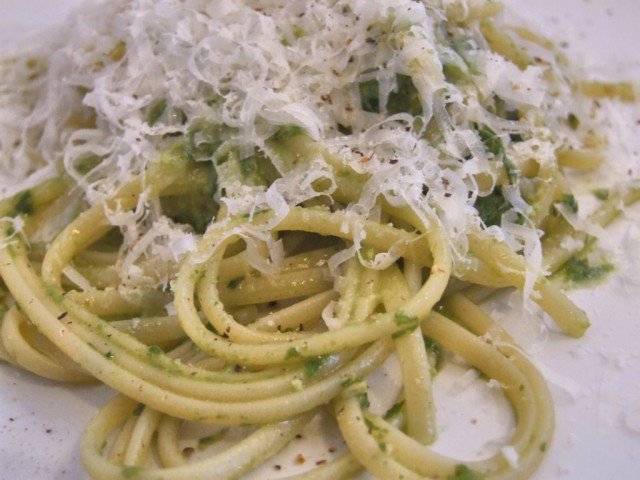Way before modern Italy, the Romans were making a type of sauce called ‘moretum’ that was made using a mortar from which the name is derived. Moretum was usually made with herbs, oil, salt, vinegar, occasionally and eaten spread on bread. Compare this to modern day pesto which is usually made from basil, pine nuts, Parmesan Cheese and Olive Oil crushed using a pestle from which the name is derived. Maybe they are not that different.
The pesto (Pesto Genovese) that we know today originates from Genoa in Liguria, Italy where basil introduced from India grows in abundance. Like most things in the Mediterranean, there are versions of ‘pesto’ like sauces throughout the region, for example ‘pistou’ from Provence in France, that is made from nearly he same ingredients, just without the pine nuts, but instead of pasta it is usually served as a topping for soup such as Soupe au Pistou.
Since the word pesto is derived from ‘pestle’, it is traditional to grind the ingredients using a mortar and pestle if you have one, but you could achieve similar results using a small food processor. There are many variations on pesto as well Pesto Genovese that we all know including the Sicilian Pesto Rosso made from less basil, almonds instead of pine nuts and tomato. Other variations include such things as arugula (rocket), mint, spinach, cilantro (fresh coriander), various nuts, olives, etc.
How to make Pesto Genovese
Ingredients
- Half a clove of garlic
- 0.5 tsp of coarse salt
- 3 large handfuls of fresh basil leaves, chopped
- 1 tbsp of pine nuts
- 2 tbsp of Parmesan or Pecorino cheese, grated
- 0.25 cup (60ml) of extra virgin olive oil
Method
- You can use plain pine nuts if you wish a more creamy taste, or you can toast them lightly in a dry, hot skillet for a minute or so until the start to turn golden brown for a slightly nuttier flavour.
- Using a mortar and pestle, grind the garlic and the salt together to make a smooth paste.
- Add the basil leaves and again grind them to a smooth paste.
- Next add the pine nuts and grind them roughly.
- Add the cheese and mix together.
- Pour the oil into the rest of the ingredients and mix to combine. Season with some freshly ground black pepper. Optionally you could a 1 tsp of freshly squeezed lemon juice at this stage to help lift the pesto, but you don’t need to.
- Use as normal pesto with pasta. It should keep for about a week in the refrigerator.

